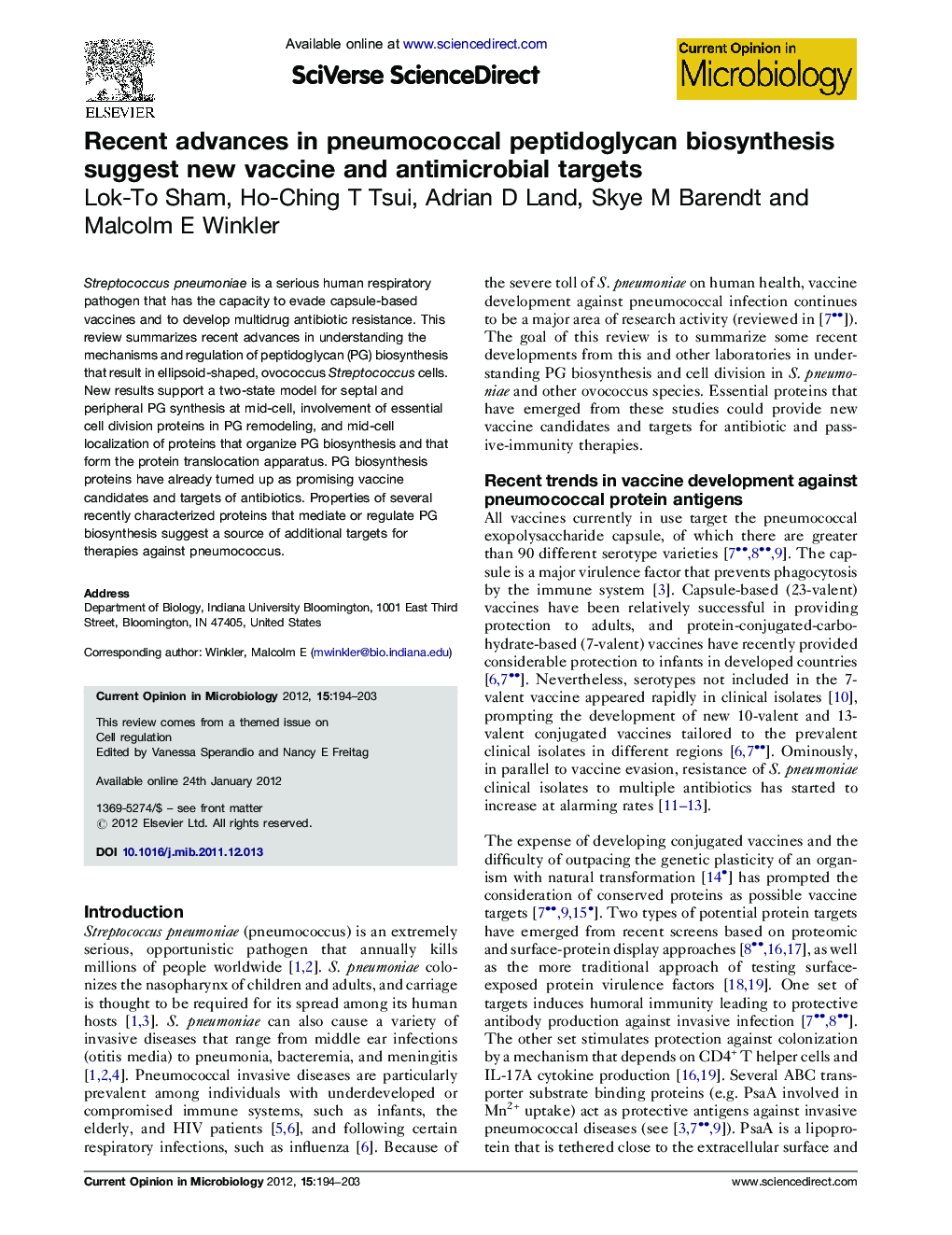| Article ID | Journal | Published Year | Pages | File Type |
|---|---|---|---|---|
| 3399150 | Current Opinion in Microbiology | 2012 | 10 Pages |
Streptococcus pneumoniae is a serious human respiratory pathogen that has the capacity to evade capsule-based vaccines and to develop multidrug antibiotic resistance. This review summarizes recent advances in understanding the mechanisms and regulation of peptidoglycan (PG) biosynthesis that result in ellipsoid-shaped, ovococcus Streptococcus cells. New results support a two-state model for septal and peripheral PG synthesis at mid-cell, involvement of essential cell division proteins in PG remodeling, and mid-cell localization of proteins that organize PG biosynthesis and that form the protein translocation apparatus. PG biosynthesis proteins have already turned up as promising vaccine candidates and targets of antibiotics. Properties of several recently characterized proteins that mediate or regulate PG biosynthesis suggest a source of additional targets for therapies against pneumococcus.
► Recent trends in vaccine development against pneumococcal surface protein antigens. ► Relates precedents to newly characterized peptidoglycan (PG) biosynthesis proteins. ► Recent evidence for the two-state model of PG synthesis in S. pneumoniae. ► Involvement of pneumococcal StkP serine/threonine kinase in PG biosynthesis. ► FtsEX cell division protein complex interacts with PcsB PG hydrolase in PG remodeling. ► Pneumococcal SecA/HtrA protein translocase localizes to regions of PG biosynthesis. ► New PG biosynthesis proteins as targets for antibiotic and passive-immunity therapies.
